#고추장
Text
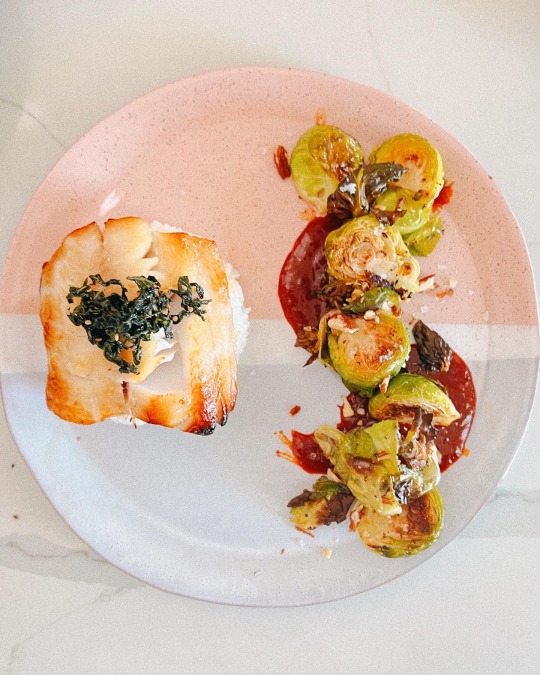
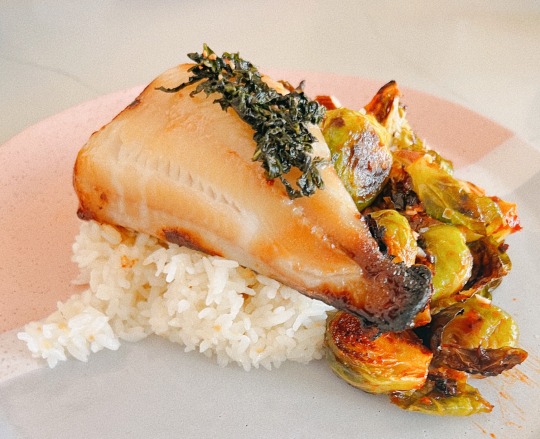

Misoyaki Butterfish, Garlic Fried Rice, and Roasted Brussel Sprouts with a Gochujang Honey Sauce.
#fresh fish#brussel sprouts#foodpics#foodgasm#food photography#foodblogger#foodporn#foodie#rice#garlic#fried rice#gochujang#고추장
40 notes
·
View notes
Text
고추장에 이것만 하면 곰팡이 절대 안 피어요!
0 notes
Text
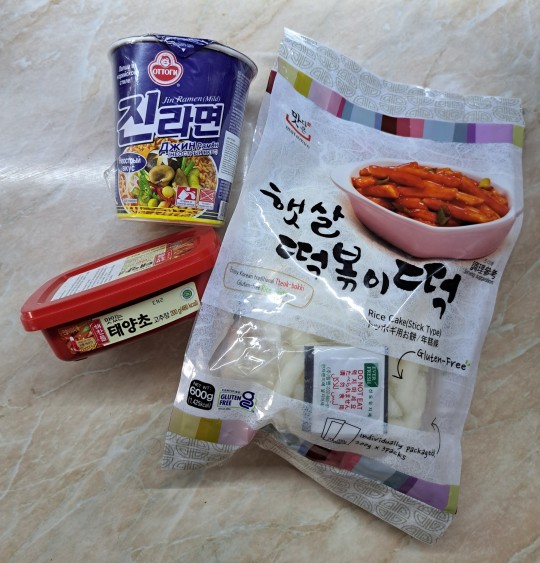
Finally I found some tteokbokki in my country (Azerbaijan) that doesn't cost an arm and a leg!! Yaaay! I used to make my own tteokbokki but it was a real hard work and wouldn't taste as good as the original. So I'm really happy to eat it after a really long while.
I think the increased interest in Korean culture among young adults finally convinced a few businessman to import some good Korean products. Only a year ago it was available in one small store that was a pain in the ass to find in the first place. And tteokbokki they sold was like 20 dollars. In a country where, say, pasta is a dollar, that price is a lot. But yesterday I found a new place and they sell it for about 4 dollars. So I didn't even think twice 😁
And gochujang was for 1.5 dollars.
#I'm so excited to make it for dinner tonight 🤤#i wish we had a asian store#we have some international stores but they don't have wide variety of asian products#korean food#tteokbokki#gochujang#jin ramen#떡볶이#진라면#고추장#한식#azerbaijan
0 notes
Photo
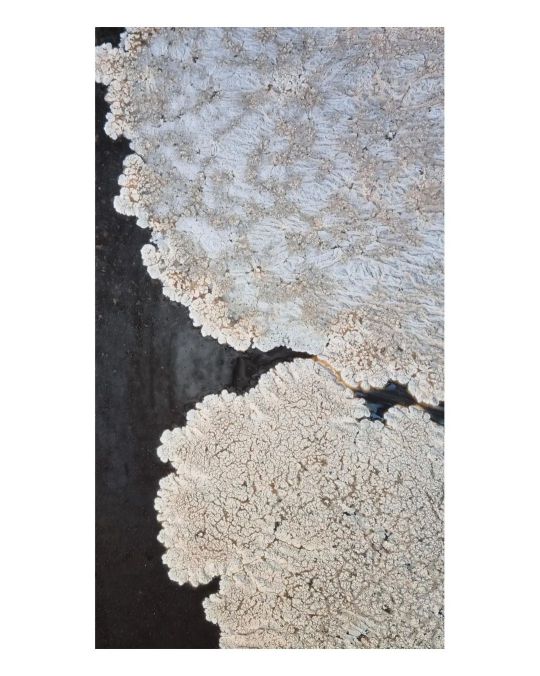
2022-09-27 (화) 🌞🍯✍🇰🇷 간장 항아리에서 꽃이 피었다. #재래식간장 #시골간장 #직접담근장 사람들은 그 꽃을 흰곰팡이라고 부른다. 마을의 어른들은 간장에 꽃이 피면 그 해 간장이 맛나다고 좋아들 하신다. 간장의 꽃인 그 흰곰팡이는 장맛을 좋게 하는 일종의 효모다. 간장이 맛나게 익어가면서 절로 피는 효모꽃이지만 그냥 두면 그 씨앗은 결코 좋은 결실을 맺지 않는다. 그러므로 예뻐하지만 말고 아깝지만 반드시 꺾어야 한다. 씨앗을 뿌리고 새로운 꽃을 피우면서 세력을 형성하지 못하게 해야 장맛을 지킬 수 있다. 끓여야 할지 고민이 된다. 가능하면 끓이지 않는 것이 좋다고 말하고 싶다. 미생물의 보고가 간장이기 때문이다. 자주 들여다보고 걷어내고 이야기를 나누며 기다리면 된다. 처서가 지나가면 온갖 걱정은 사라진다. '네이버 고은정님 블러그중에서' ㆍ #20220927 #된장 #보리된장 #시골된장 #재래식된장 #간장 #시골간장 #조선간장 #고추장 #맛있다그램 #일상스타그램 #귀농스타그램 #귀농귀촌 #귀농이야기 #귀농 #귀농라이프 #countryside #countrylife #초보농부 #초보농사꾼 #함양 #함양귀농 #농부 #농부스타그램 #지리산 #지리산자락 @함양(Hamyang에서) https://www.instagram.com/p/CjAbXBnrkCg/?igshid=NGJjMDIxMWI=
#재래식간장#시골간장#직접담근장#20220927#된장#보리된장#시골된장#재래식된장#간장#조선간장#고추장#맛있다그램#일상스타그램#귀농스타그램#귀농귀촌#귀농이야기#귀농#귀농라이프#countryside#countrylife#초보농부#초보농사꾼#함양#함양귀농#농부#농부스타그램#지리산#지리산자락
0 notes
Photo

#먹자 #살자 #오늘아님 #구내식당 #동태탕 #육전 #천사채무침 #깍두기 #연두부 #고추장 #참기름 #배부름 (서울특별시 서울의료원에서) https://www.instagram.com/p/CgAxWDlvNlB/?igshid=NGJjMDIxMWI=
0 notes
Photo
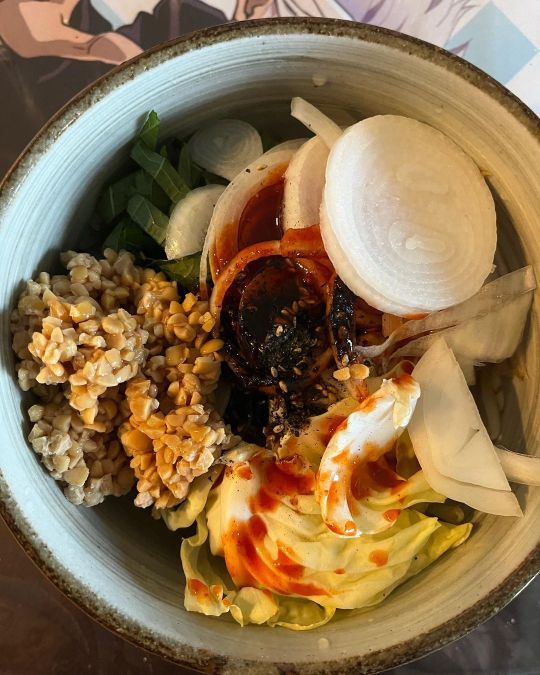
#코스트코 에 풀린 #동원 #쟁반 #막국수 #コストコ に出た#ドンウォン のトレイの#マックッス #스프 , #참기름 ,#고추장 등 내용물도 풍부한데 スープ、#ごま油 、#コチュジャン などの内容物も豊富だが #양배추 #양파 #깻잎 등 #야채 많이 넣고 #낫토 까지 #후루룩 #호로록 #짭짭 #キャベツ や#タマネギ 、#エゴマ の葉っぱなど#野菜 をたくさん入れて納豆まで#ツルツル #ぐちゃぐちゃ #면발의신 #쟁반막국수 #costco #japan (矢田川에서) https://www.instagram.com/p/CetJQl8p9R0/?igshid=NGJjMDIxMWI=
#코스트코#동원#쟁반#막국수#コストコ#ドンウォン#マックッス#스프#참기름#고추장#ごま油#コチュジャン#양배추#양파#깻잎#야채#낫토#후루룩#호로록#짭짭#キャベツ#タマネギ#エゴマ#野菜#ツルツル#ぐちゃぐちゃ#면발의신#쟁반막국수#costco#japan
0 notes
Text
고추장
[go·chu·jang]
(noun) red pepper paste
0 notes
Note
고추 slang for dick -> 고추장 slang for cum??
You know what... I thought about that when I wrote my tags and apparently you got that 🌶️💦
Good job, here's a gif I made for no particular reason a while ago and completely unrelated to the subject matter

7 notes
·
View notes
Text
앞집에서 열무김치 담갓다고 맛보라며 주신다 ..
이런건 말이쥬..
꽁보리에 고추장 넣고 팍팍비벼서 먹으면 아주 데끼리쥬..
그래서 비볐씨유.
팍팍 ..
이런건 전투적으로 먹어야 함미당 팍팍 .
청국장은 국룰 ..
#광명전통시장 #광명시장 #전통시장 #추천맛집 #광명왕족발 #광명할머니왕족발 은 #광명소셜상점 #미리내가게 #광명8경 #광명동굴 #광명시 #LocalGuides 와 함께 합니다

18 notes
·
View notes
Note
Happy late birthday!! Sorry for the late wishes but I hope you had fun :)
Tysm! It wasn't bad, I did end up purging, this may seem obvious but 김치 and 고추장 hurt coming back up, I hope ur day goes wonderfully and if it's night I hope u have the most comfortable sleep and wake up a kilo less (≧▽≦)
4 notes
·
View notes
Text
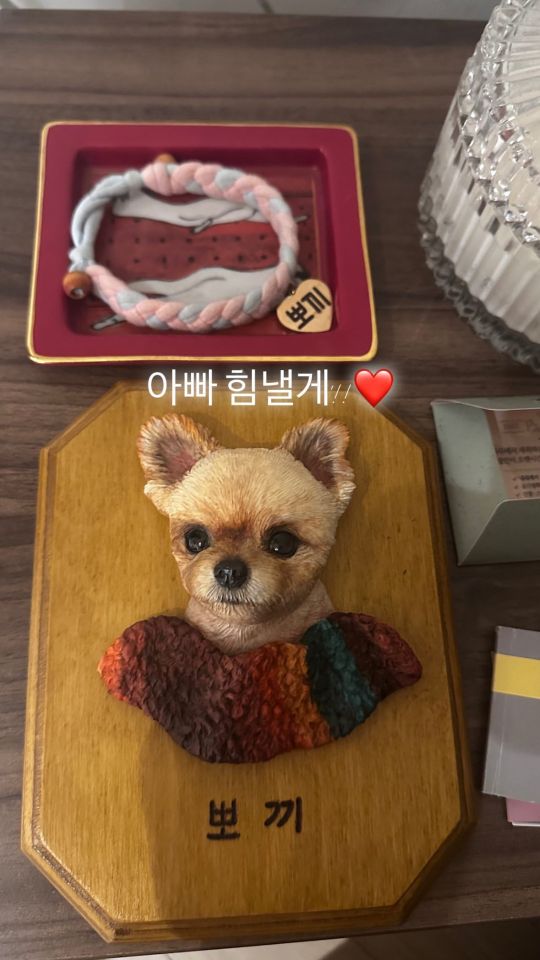
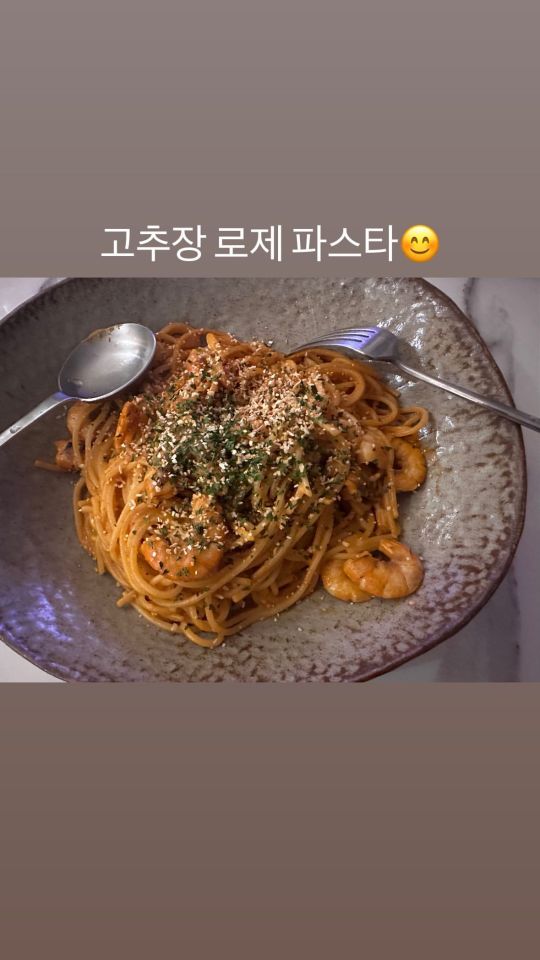
221119 instastory | @leo_jungtw
아빠 힘낼게❤️
Dad will do his best❤️
고추장 로제 파스타😊
Red pepper paste rosé pasta😊*
*he made this while 🫧live
3 notes
·
View notes
Link
고추장 위에 ‘이것’ 붙였을 뿐인데 효과 대박이에요!
1 note
·
View note
Text
골다공증 예방하는 <호박순 된장국>
호박잎 먹는 건 많이들 알고 계시지만
호박순을 먹을 수 있다는 건 모르시는 분들이 많은 것 같아요.
예전에는 호박 농사짓는 사람이나 먹을 수 있는 특수 부위였는데
요즘은 호박순 수확을 위한 품종이 따로 나올 정도로
효능이나 맛이 좋기로 유명해졌습니다.
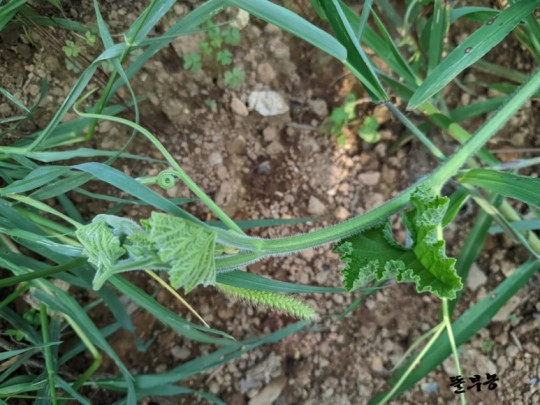
호박순은
호박 줄기 끝에 호박잎이 막 생겨나는 부위이고
그 옆에 뭔가를 감으려고 나오는 덩굴손을
호박손이라고 합니다.
호박손도 임산부들에게 좋아서
말린 것으로 차 끓여 먹는다고 하더군요.

저희 집에도 농사 망한 호박이 있어서
호박은 못 먹어도 이 시기에 호박순은 먹습니다.^^;;
호박잎처럼 호박순도 거친 부분 벗겨내고
물에 박박 주물러 씻어 풋내가 나지 않게 합니다.
쌀뜨물에 호박순 넣고
같이 따온 풋호박도 대충 뚝뚝 썰어 넣고
된장, 고추장, 다진 마늘, 들깨가루 넣어
한 시간 정도 중불에 푹 끓여줍니다.

바쁜 하루를 보내고 저녁 식탁에 앉아
뜨끈하고 구수한 호박손 된장국을 먹으면
뭉쳤던 어깨가 다 풀어지는 느낌입니다.
호박이나 호박잎이나 피로 회복에 좋으니 그럴 만도 하지요.
특히 호박잎이나 호박순에는 칼슘도 많다니
시들기 전에 부지런히 먹어둬야겠습니다.
5 notes
·
View notes
Photo
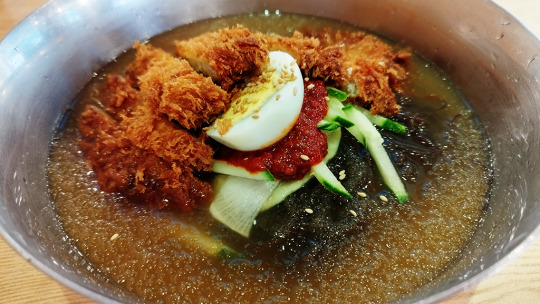
"돈냉면"
이번 주 특이사항은, 화요일(2023.4.18)은 선선했다가 다음 날 갑자기 기온이 28도까지 치솟음. 그 때문인지는 모르겠으나 인터넷 커뮤니티에 때 이른 냉면 얘기가 두어 편 올라옴. 그중 하나가 '돈까스 + 냉면 = 돈냉면'. 몇 년 전에 둘을 함께 먹는 괴식성을 가진 사람이 있단 걸 알긴 했지만, 설마 그사이 본격적인 식당 메뉴로 등극(?)했으리라곤 예상 못 함. 이태리 애들이 파인애플 피자만 보면 기겁하듯, 이 또한 괴랄하기 짝이 없지만 그래서 더 궁금한 것...
지도 검색하니 마침 집에서 가까운 식당이 있길래 일부러 찾아가 먹어 봄. 내가 간 곳은 홍대 동아냉면처럼 고추장 얹은 물냉면 위에 돈까스를 올려놨다. 일단 고추장이 잘 퍼지게 한 후 돈까스를 국물에 푹 담금. 냉면 두어 젓가락 먹은 뒤 돈까스 한 입 배어 먹은 소감은 "Why???"였다.
둘을 함께 먹음으로써 제3의 맛을 창조했다면 납득할 텐데 그런 게 없다. 그냥 누구나 다 아는 돈까스 맛, 냉면 맛일 뿐인데 굳이 왜 섞어 먹는 거지? 짐작건데 짬짜면처럼 둘 다 먹고 싶은 누군가가 시험 삼아 섞어 봤거나, 가츠동을 한국식으로 우라까이 했거나, 물냉면에 실수로 돈까쓰 떨어뜨렸다가 아까워 먹어 보니 의외로 먹을만 했다거나? 암튼 꼭 이렇게 먹어야겠다면 딱히 더 할 말은 없다는... 개인적으론 '민트초코'라 쓰고 "치약초코"로 읽히는 그 맛 좋아하는 분들도 존중하는데, 이 정도는 뭐...
2 notes
·
View notes
Photo

#먹자 #오늘아님 #구내식당 #소불고기는어디로 #계란후라이 #고추장 #참기름 #버섯 #배부르다 (서울특별시 서울의료원에서) https://www.instagram.com/p/Ce-inDpLoOt/?igshid=NGJjMDIxMWI=
0 notes
Text
youtube
Bibimbap
비빔밥
Rice mixed with vegetables, meat, an egg, and chili pepper paste
Today’s recipe is bibimbap, a super-popular Korean dish you might have heard about already! It’s made of a bowl of rice, sautéed and seasoned vegetables (namul: 나물), a bit of hot pepper paste (gochujang: 고추장), and usually a bit of seasoned raw beef, too (yukhoe: 육회).
Bibim (비빔) translates as “mixed,” and bap (밥) means “cooked rice,” so bibimbap literally means “mixed rice.” Before eating it you’re supposed to mix everything all together.
There are many variations on this dish, from simple to elaborate, and this recipe I’m showing you today is for one you could consider “classic” bibimbap. If you ordered bibimbap in a Korean restaurant, you would probably get something like this dish, with regional variations. I’m also going to show you bibimbap prepared and served in a heated stone or earthenware bowl called dolsot-bibimbap (돌솥비빔밥). “Dolsot” means “stone pot” in Korean, and this version is well-known for the way the bowl makes a layer of crispy, crackling rice on the bottom of the bibimbap.
Even though we mix up bibimbap before we eat it, each ingredient needs to be prepared with care and individuality, bringing out their unique flavors, textures and colors so they come together beautifully in the bowl and deliciously in your mouth. The different ingredients aren’t random, they’re chosen because they balance, harmonize, and offset each other.
This recipe isn’t quick and easy, it takes some time to make. But if you’re really in a rush you can make a great bibimbap with the soybean sprouts, spinach, and carrot (or red bell pepper, or both), and gochujang, toasted sesame oil, and an egg— those items are unskippable!
I’m going to share some more bibimbap recipes on my website in the future, and you’ll see how many different variations there are. This version is a little different than the version in my cookbook, because I make a quick and simple soup with the bean sprouts. When I started my YouTube channel, bibimbap was one of the first recipes I made, because it’s such an essential dish in Korean cuisine. So I’m happy to remake the video now in HD with much better editing and instruction. I’ve been building up to this video by remaking videos for the ingredients, too. I remade yukhoe, and sigeumchi-namul, and my yukagaejang video has a lot of detail about preparing the mountain vegetable fernbrake.
So if you’ve been following my videos, you’re now ready to be a bibimbap master! Ready? Let’s start!
Ingredients (serves 4)
5 cups cooked short-grain rice
12 ounces soy bean sprouts, washed and drained
8 ounces of spinach blanched and washed with the excess water squeezed out by hand
1 large carrot
1 large red bell pepper
1 large zucchini
1 English cucumber
3 to 4 green onions, chopped
½ pound fresh lean cut of beef (fillet mignon, flank steak)
4 ounces fernbrake (gosari), fresh or soaked from ½ ounce dried gosari (details below)
1 ounce dried bellflower roots (doraji), soaked in cold water for 18 to 24 hours.
4 eggs
kosher salt
vegetable oil
toasted sesame oil
toasted sesame seeds
garlic
soy sauce
honey (or sugar)
Korean hot pepper paste (gochujang)
How to prepare dried fernbrake (gosari) for use
If you have presoaked or fresh fernbrake you can use it straight away, but if you have dried fernbrake you’ll need to get it ready to eat. It’s fast if you have a pressure cooker, but if you don’t it will take some time.
With a pressure cooker:
Wash ½ ounce of dried gosari and boil it with 5 cups of water in a pressure cooker for 30 minutes.
Drain and rinse in cold water a couple of times.
Drain. It should make 4 ounces.
In a pot on the stove:
In a large saucepan add ½ ounce of dried gosari to 7 cups of water. Bring to a boil over medium-high heat and boil for 30 minutes. Cover and let stand until cool, about 2 to 3 hours.
Rinse the fernbrake a couple of times, drain and put in a bowl. Cover with fresh cold water and let soak for at least 8 hours or overnight in a cool place, changing the water 2 or 3 times during the soaking.
Taste the gosari: It should be soft. If it’s tough, boil it again in a fresh pot of water for about 20 minutes and then let it sit, covered, until soft.
Drain. It should make 4 ounces.
Make rice
If you have a usual method for making rice or have a rice cooker, go ahead and make 5 cups of rice like you usually do. But here’s how I do it on a pot on the stove. 2 cups of dried rice makes about 5 cups of cooked rice.
Rinse 2 cups of rice in cold water and scrub the wet rice with your hand. Rinse and drain until the drained water is pretty clear.
Put the rice in a heavy-bottomed pot. Add 2 cups of water, cover, and soak for 30 minutes.
Cook over medium high heat for 7 to 8 minutes until the surface is covered with abundant bubbles that are spluttering noisily and look like they’re about to overflow the pot. Turn the rice over a few times with a spoon and cover the pot again.
Turn the heat to very low and simmer for another 10 minutes until the rice is fully cooked and fluffy. Remove from the heat.
Fluff the rice with a spoon to release excess steam. Let the rice stand, covered, at room temperature to keep it warm.
Prepare and cook the ingredients for bibimbap
I like to get a big platter and then put each vegetable on it as they’re ready. I think it looks really pretty, but you don’t have to do this. When all vegetables are prepared and ready to use, the platter looks pretty delicious!
Soybean sprouts:
Put the soy bean sprouts in a pot and add 4 cups water and 2 or 3 teaspoons salt. Cover and cook for 20 minutes over medium high heat. Take out the sprouts with tongs and put them into a bowl, leaving about ½ cup of sprouts in the pot with the water you used to boil them. This is the soup to serve with bibimbap later.
In a bowl, mix the sprouts by hand with ½ teaspoons salt, 1 teaspoon minced garlic, and 2 teaspoons toasted sesame oil. Put them on the large platter.
Spinach:
Cut up the blanched spinach a few times and put it in a bowl. Mix by hand with 1 teaspoon garlic, 1 teaspoon toasted sesame oil, ½ teaspoon kosher salt, and 1 teaspoon sesame seeds. Cover and put it next to the soy bean sprouts on the platter.
Other fresh vegetables:
Cut the carrot into matchsticks, put them in a bowl, and mix with a pinch of salt. Let stand for 5 to 10 minutes until sweating.
Cut the red bell pepper into halves, deseed, and slice into strips. Put them in a bowl.
Cut the zucchini into matchsticks and mix with ½ teaspoon kosher salt.
Cut the cucumber into halves lengthwise and slice thinly crosswise. Mix with ¼ teaspoon kosher salt.
Beef:
Cut the beef into matchsticks and put them in a bowl.
Mix with 1 tablespoon minced garlic, 1 tablespoon soy sauce, 1 tablespoon honey, 2 teaspoons toasted sesame oil, and 1 teaspoon sesame seeds with a spoon.
Cover and keep in the fridge until ready to use.
Mountain vegetables:
Cut the fernbrake (gosari) a few times into bite size pieces. Set aside.
Put the bellflower roots (doraji) in a large bowl. Add 1 or 2 tablespoons salt. Rub for a minute to wilt slightly and release some of the bitterness. Rinse them in cold water a couple of times and drain. If you find some roots are too thick, split them lengthwise. Set aside.
Let’s cook!
Heat up a pan over medium high heat. Squeeze out excess water from the carrot. Add a few drops of cooking oil to the pan and sauté the carrot for 1 minute. Put it on the platter next to the soy bean sprouts and spinach. Clean the pan with wet paper towel or wash it.
Heat a few drops of cooking oil in the pan and squeeze out the excess water from the cucumber. Sauté with ½ teaspoon minced garlic and a few drops of toasted sesame oil for 30 seconds. Put it on the platter. Clean the pan.
Heat up the pan with a few drops of cooking oil. Add the red bell pepper and sprinkle a pinch of salt over top. Sauté for 30 seconds. Put it on the platter. Clean the pan.
Heat up the pan and squeeze out excess water from the zucchini. Add a few drops of cooking oil and sauté with 1 teaspoon minced garlic, 1 tablespoon chopped green onion, a drop of toasted sesame oil for 1 minute until slightly softened. Put it on the platter. Clean the pan.
Heat up the pan with a few drops of cooking oil. Add the bellflower roots and sauté for 2 to 3 minutes. Lower the heat to medium so as not to brown them. Add 1 teaspoon minced garlic and a drop of toasted sesame oil. Stir for another minute until a little softened. Put it on the platter. Clean the pan.
Heat up the pan. Add a few drops of cooking oil. Stir the gosari for 2 minutes until a little softened. Add ½ teaspoon of minced garlic, 2 teaspoons soy sauce, and 2 teaspoons sugar, and keep stirring for another minute. Put it on the platter.
Serve
Here are a couple of ways to serve: bibimbap in a regular, shallow bowl, and dolsot-bibimbap in a stone or earthenware bowl.
In a regular, shallow bowl
Reheat the soybean sprout soup.
Divide the cooked rice into 4 portions. Each portion will be a little more than 1 cup of rice.
Put the rice in each of 4 bowls and arrange the vegetables and beef on the rice. Top with a raw egg yolk and gochujang. If you prefer your eggs and beef cooked, use a fried egg sunny side up and slightly pan-fry the beef before putting them on the top of rice.
Sprinkle the bibimbap with the sesame seeds and drizzle with sesame oil to taste.
Ladle the soup to a small bowl and sprinkle some chopped green onion over top.
Serve right away with more hot pepper paste on the side, and maybe kimchi too.
Dolsot-bibimbap in a hot earthenware bowl (ttukbaegi) or hot stone bowl (dolsot)
Reheat the soybean sprout soup.
Put a few drops of toasted sesame oil in the bottom of each of 4 earthenware bowls. They should be big enough to hold 4 to 6 cups each.
Divide the rice among the bowls. Arrange the vegetables and beef on the rice. Top each serving with a raw egg yolk and 1 tablespoon gochujang. If you prefer your eggs and beef cooked, use a fried egg sunny side up and slightly pan-fry the beef before putting them on the top of rice.
Set each pot on a burner. Heat over medium high heat until you hear a ticking, crackling sound coming from the rice.
Sprinkle the bibimbap with the sesame seeds, drizzle with sesame oil to taste.
Ladle the soup to a small bowl and sprinkle some chopped green onion over top.
Serve right away with more hot pepper paste on the side and maybe kimchi too.
Eat
Gently but firmly mix everything together in the bowl with your spoon. Try not to crush the more delicate ingredients.
Eat with your spoon.
Posted on Sunday, January 6th, 2008 at 11:14 pm. Last updated on September 18, 2022.
#bibimbap#bibimbap recipe#dolsot bibimbap#돌솥비빔밥#비빔밥#homemade bibimbap#hot stone bowl bibimbap#how to eat bibimbap#how to make bibimbap#how to make dolsot bibimbap#Korean earthenware bowl bibimbap#korean food#Korean Mixed Rice with Meat and Assorted vegetables#Korean mixed rice with vegetables and meat#Korean recipes#Korean stone pot bibimbap#rice mixed with vegetables#spicy mixed rice#stone bowl bibimbap#Youtube#kfood#korean#food#foodie#recipe#bts#rm#jin#suga#jhope
5 notes
·
View notes